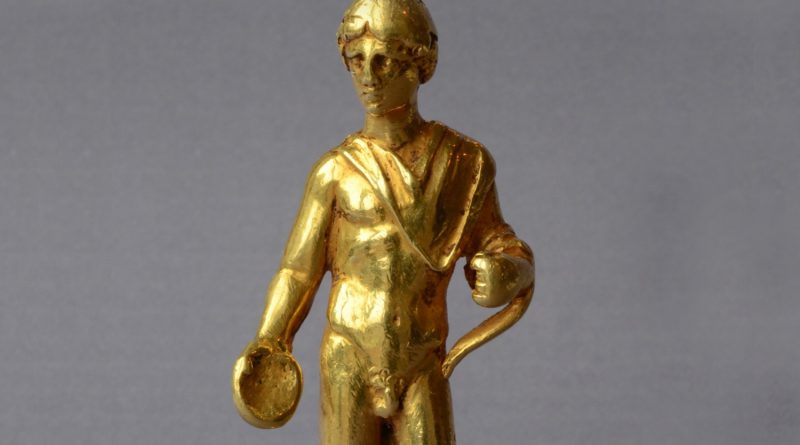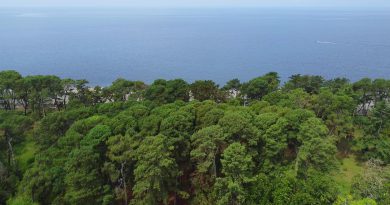Museums to visit when visiting Batumi
Ethnographic Museum “Borjghalo”
Ethnographic Museum “Borjghalo” is located in Adjara, Batumi, at 14 Sharashidze Street. The museum covers an area of 3000 square meters and has the appropriate infrastructure, landscaping, paths and even a waterfall (9 m). The Ethnographic Museum presents models of residential and agricultural buildings typical of the Adjara region, folk handicrafts, agrarian economy, everyday life, etc., all of which you will see accompanied by folk music.
Kemal Turmanidze, the creator and founder of the museum, has been collecting various ethnographic items for years.
Currently, his museum houses more than 4,000 exhibits, 5% of which are gifts and 95% are purchased or created by him.
Ethnographic Museum “Borjghalo” is one of the sights of Batumi and it is a very interesting place to get acquainted with the folklore, life and cultural peculiarities of Adjara.
Batumi Ilia Chavchavadze Museum
Batumi Ilia Chavchavadze Museum is located at 5 Griboedov Street, Batumi, Adjara. The museum presents photos and documentaries related to the life and work of the famous Georgian writer and public figure – Ilia Chavchavadze, paintings and sculptures and items depicting his life and ethnography and existence. Here you will also find materials and personal belongings of Ilia’s friend, writer and doctor, Grigol Volski, working in Batumi. 278 exhibits are preserved in the museum.
Batumi Archaeological Museum
Batumi Archaeological Museum is located in Adjara, in the city of Batumi, at 77 Chavchavadze Street. It was founded in 1994 and is one of the most important scientific, educational and cultural centers of Georgia.
The museum preserves stone, bronze, iron, antique, Hellenistic, Roman, Byzantine and medieval artefacts, which are mainly found in southwestern Georgia (Kobuleti, Makhvilauri, Pichvnari, Tsikhisdziri, Batumistsikhe, Gonio-Apsaros, Adjaristskali and etc.) discovered during archaeological excavations conducted for the period of more than half a century.
The oldest specimens of the exposition are the stone tools found in the mountains of Adjara, near the resort Beshumi, the date of which is 300-400 thousand years. Eneolithic-Early Bronze (V-III millennium BC), especially Late Bronze and Early Iron Age (XV-VII centuries BC) are represented by a variety of materials. Interesting numismatic and sculptural monuments of gold, silver, bronze and iron are preserved in the museum collections. As well as the rich gold fund of the museum, where an important place is occupied by the examples of Colchian goldsmiths’s works.
Nobel Brothers Museum
The Nobel Brothers Technological Museum is located in Adjara, Batumi, at 3a Leselidze Street.
The Nobel Brothers Technological Museum was founded in 2007, in the building where the “Batumi Cantora” of their community was located a century ago. Here you will find information about the Swedish inventors and the Nobel laureates known as the “Kings of Oil”. The museum keeps exhibits reflecting the economic and cultural development of old Batumi. This will introduce you to the history of tea, tobacco, and wine culture, and an interesting biography of Lao Jin-zhao.
Adjara State Museum of Art
Adjara State Museum of Art – a real monument of cultural heritage in Batumi, Adjara. It was founded in 1998.
Adjara State Museum of Art is one of the main exhibition spaces in Batumi. There both temporary and permanent exhibitions are presented. The first floor of the museum is dedicated to Georgian, international exhibition-educational and synthetic projects.
The works of Niko Pirosmanashvili, Davit Kakabadze, Lado Gudiashvili, Elene Akhvlediani and other masters are presented on the second floor.
In the left wing of the museum there is a small gallery where the works of young authors are systematically displayed.
The museum preserves paintings by famous Georgian and foreign artists (Niko Pirosmani, D. Kakabadze, L. Gudiashvili, E. Akhvlediani, St. Bakalovich, Sommer, A. Tern, R. Fetviashvili, N. Ignatov, A. Zankovski, G. Tsereteli, etc), Graphic works (N. Churgulia, L. Zambakhidze, and others), ceramics, wood, glass, stamping, tapestry, sculpture (E. Fantarel’s “Nymph and Little Fawn”, G. Ochiauri’s “Portrait”, etc.).
Khariton Akhvlediani Museum of Adjara
Khariton Akhvlediani Museum is one of the important scientific-educational institutions. It was founded in 1908. The museum preserves up to 180,000 exhibits: unique items, collections. In exposition: 1820 exhibits are presented in the section of nature, archeology, ethnography, and history. Among them: are rare natural monuments, flora, fauna, minerals, archeological collections, rare ethnographic items, unique photos, works of art, manuscripts and documents.
Memed Abashidze House-Museum
Memed Abashidze House-Museum is located in Adjara, Batumi, At 7 M. Abashidze Street. Memed Abashidze is a Georgian public figure, writer and publicist. His memorial items are preserved in the museum. He appeared in the field of activity at the beginning of the XX century and systematically printed publicist letters in the Georgian press. He also actively fought for the national self-awareness of Muslim Georgians and the unity of Georgia, for which he was arrested and deported several times.




